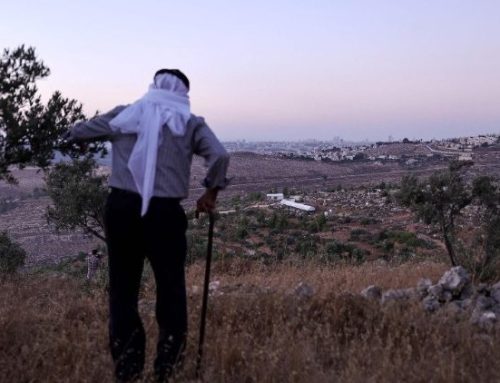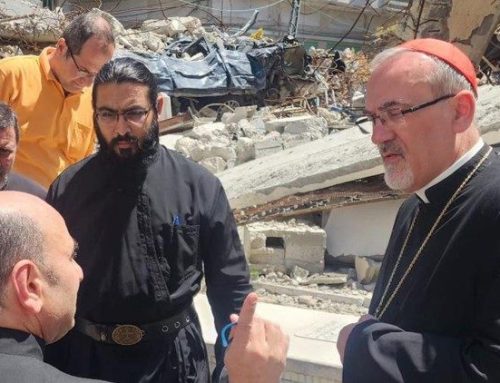Russell O. Siler, Retired
OK, here goes. Start at a point on the Mediterranean coast south of Haifa, continuing southeast to a point south of Umm al Faam on the 1949 Armistice Line between Israel and the Palestinian Territories. All Israeli land north of that point will become part of the future Palestinian state. Now draw rough ovals, open on the west, around the settlement blocs of Ariel and Gush Etzion in the West Bank, connecting them physically to Israel, making them a part of that state. Third, Create an internationally controlled zone encompassing Jerusalem, Bethlehem, and the E-1 corridor between the settlement of Ma’ale Adummim and Jerusalem. Fourth, connect the present settlement of Ma’ale Adummim in the West Bank to Israel via unrestricted routes through the E-1 corridor and the greater Jerusalem area. Fifth, erase the boundary between the Gaza and Israel, making that land part of Israel. Sixth, remove the Separation Barrier which now becomes irrelevant. Seventh, allow all residents of areas where possession and ownership has passed from “one side” to the other to decide whether they will remain as citizens of their new entity or will re-locate to a place in their former state.
Let the talks begin!
For some years now I have been personally frustrated by the lack of any substantive negotiations which could lead ultimately to an accord creating two states living beside each other, each depending on the other for some degree of security and prosperity. In the meantime the shapes of the two entities have been shifting. Of course, my frustration has been nothing when compared to the lot of those living on the land there who genuinely want peace and who sincerely believe that the destinies of two peoples with three religions are inextricably intertwined. So much media attention in recent weeks has focussed on the settlements, and the reasons are obvious. Nearly 500,000 Israeli settlers now live in the West Bank and East Jerusalem–many of them on privately-owned Palestinian land. Yet many of the settlement blocs have grown so large that the prospect of emptying them is a daunting one indeed, in spite of the justice of such a move. Much is made of the attention paid by several American presidents, including most notably George W. Bush, to the “situation on the ground” as it relates to these settlements, some of which can be more accurately described as cities. The Obama administration has taken a hard line so far, calling for a complete halt to any settlement construction regardless of Israeli justification. Therefore the idea reflected here is to center on a proposal which does recognize the realities of massive settlement construction by Israel for the past 42 years, but begins to acknowledge what might be the cost of such an enterprise.
There will be numerous objections to a proposal such as this, should one surface. How could the Palestinians contemplate giving up Gaza? Most of its people are already refugees from the 1948 war, and, historically, Gaza has never been part of Israel. Or. Haifa? Israel will never give up this beautiful city, in spite of the fact that it is right now a city of both Israelis and Palestinians. The answer to these and thousands of other objections is that if each side is unwilling to give up anything, there will be no future except eternal war.
There are also many positives. In concert with Israeli assertions that Jerusalem must remain undivided, the Holy City would remain whole. Both nations could have their capitols there and Jews, Muslims, and Christians would have access to the sites safeguarded by impartial forces with the backing of the rest of the world. Further, the Golan Heights would now be a matter of concern between two Arab nations, not a direct danger as now perceived by many Israelis.
However, by far the greatest benefit which would arise from such a realignment of land in Historic Palestine is that Israel would then border only those nations with which it has a treaty of peace. It goes without saying that any accord in the Israeli-Palestinian struggle must be based on a mutually assured pact of respect for each other’s borders and sovereignty. If it is not, no agreement has a chance for success.
Without a doubt such a plan as offered has a thousand questions and details to be resolved before it could become fact, details which can only come about by agreement of the two parties. But it moves the center of debate away from the settlement question as the core issue, and thus eliminates the “delay strategy” that settlement pronouncements inevitably create. In addition it moves from the theoretical to the actual. No longer do we argue constantly over “outposts” vs. settlements, only referring to the latter in a general tone, as in “Some of the larger blocs will remain a part of Israel.” and hypothetical constructs such as “Some Israeli land will, of course, be given to a Palestinian state in exchange for Israel retaining the larger settlement blocs.” At least people can have this idea or some other idea as a different frame of reference upon which to base their hopes and aims.
My only wish and prayer is that the madness of violence, fear, and oppression will end, replaced by a lasting peace with justice.
Russell O. Siler, Retired





